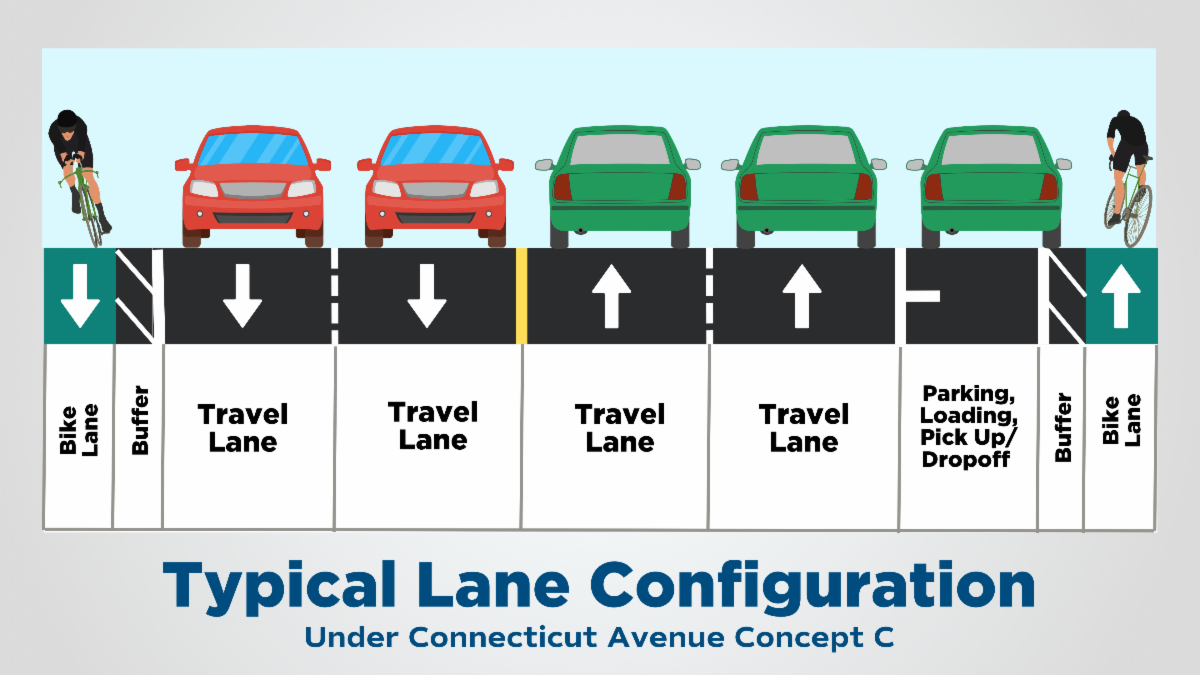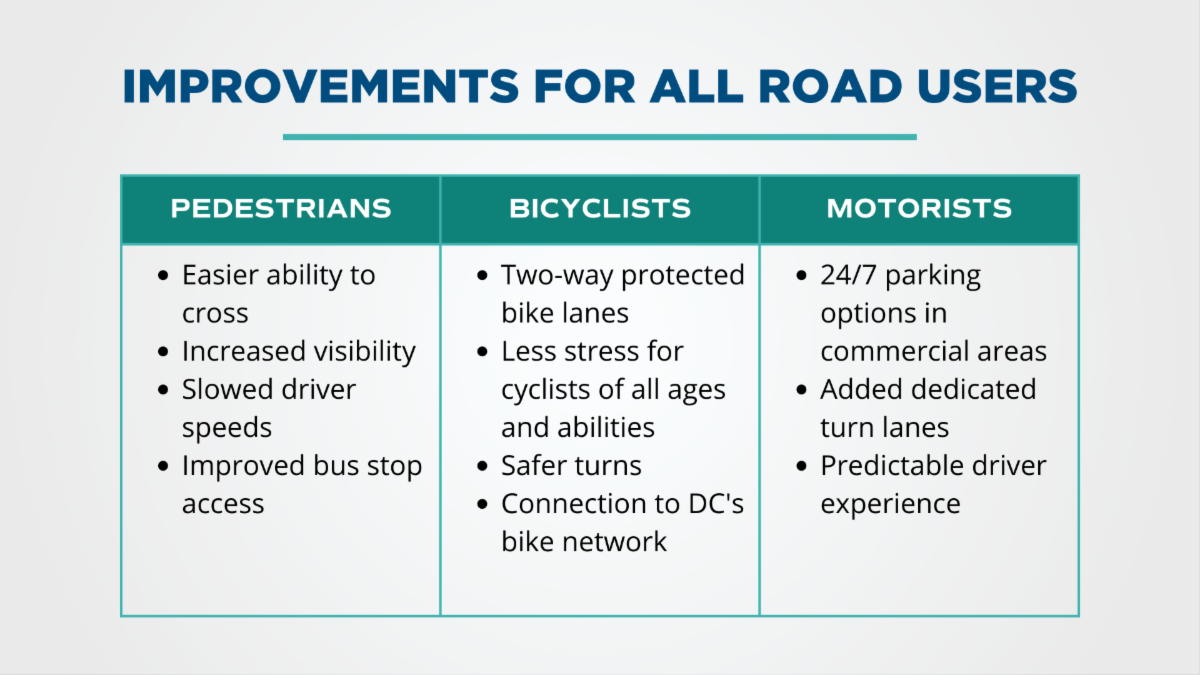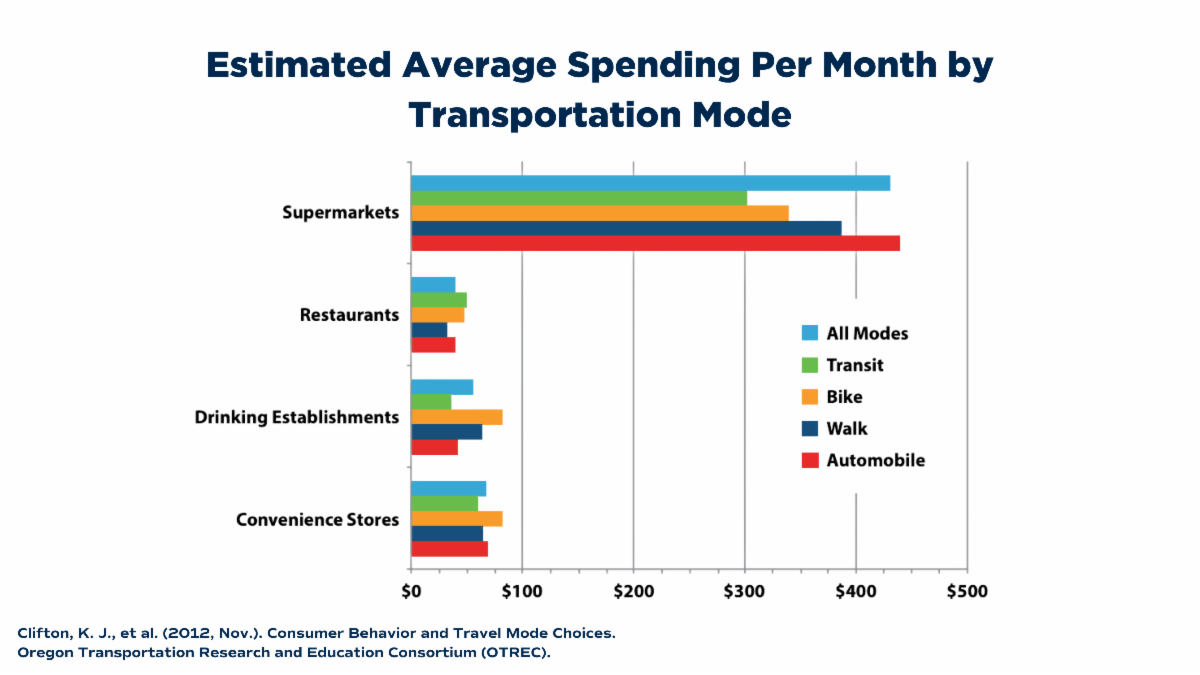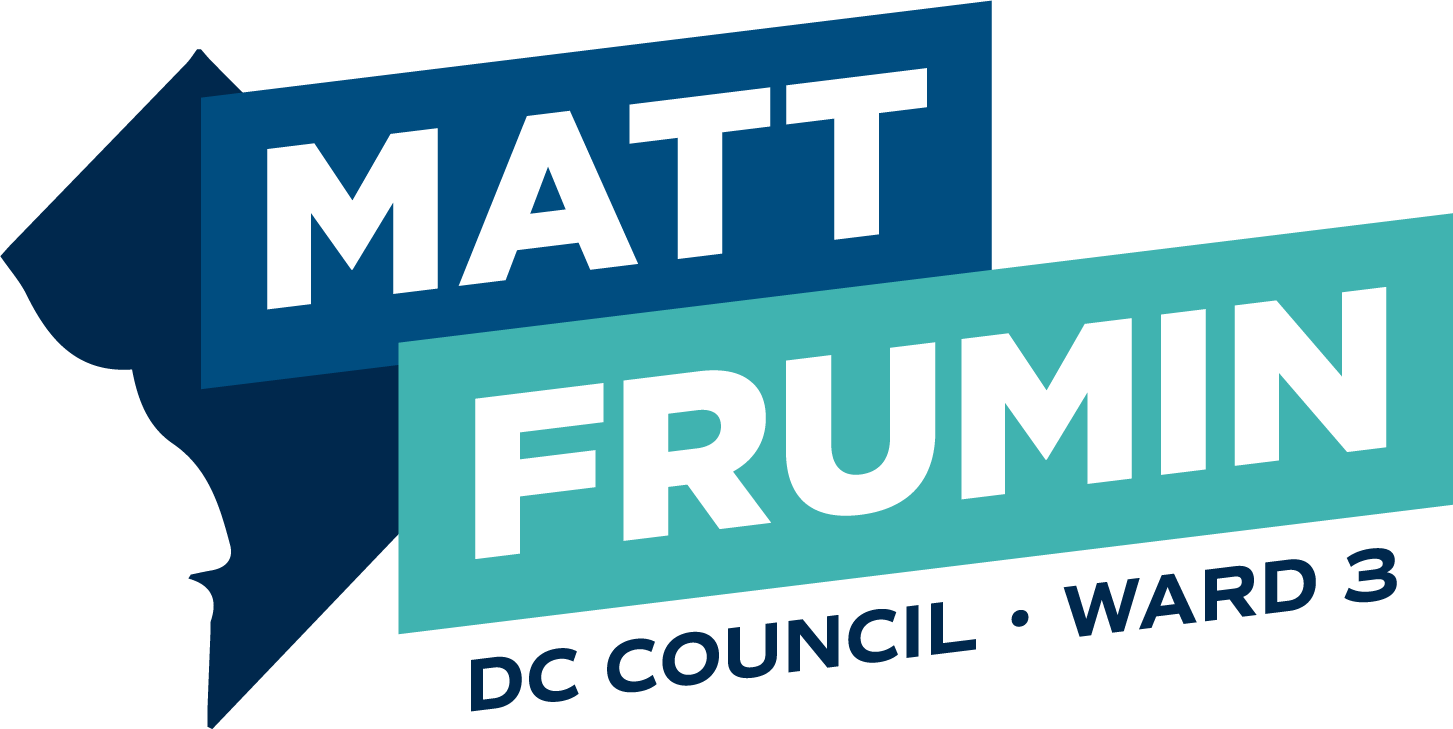Statement on the Connecticut Avenue Multimodal Improvement Project
In response to dangerous road conditions, 24 ANC Commissioners, former Councilmember Cheh, Mayor Bowser, and DDOT all recognized the need for improvements on Connecticut Avenue. I share their desire for a safety-focused redesign of Connecticut Avenue and improved multimodal transportation options in Ward 3. I expect the final proposal for Connecticut Avenue will make the roadway safer for all users, including children, seniors, and people with disabilities; improve sustainable transportation options; and accommodate the needs of neighbors and our small business community
The Big Picture
The redesign will make Connecticut Avenue a safer, more sustainable corridor with improved access to local businesses. I continue to push for a consensus plan that prioritizes safety while preserving parking, pick up/drop off, and loading zones.
What will Connecticut Avenue look like?
DDOT is still in the design phase of the project, but the typical lane configuration is certain to include two vehicle travel lanes in both directions; space for pick up, drop off, and loading; and protected bicycle infrastructure. The redesign maintains the number of off-peak travel lanes and will, in many ways, look like the current configuration. The most significant changes come from safety features that benefit pedestrians and cyclists.

Safety for All Road Users
Connecticut Avenue should not be a six-lane highway through our Ward 3 community. Connecticut Avenue is designated as a Vision Zero high crash corridor; there were more than 34 crashes on the corridor in the last year, some of them fatal. We can transform the corridor with improved visibility, shorter crossing distances, more signalized crosswalks, and impactful enforcement. Safety can’t wait, especially for students looking to walk or bike to schools along the corridor.
I anticipate that the changes made by the Connecticut Avenue redesign will ensure a safer, low-stress travel experience for all road users.

Environment, Transit, and Parking
I believe that the Connecticut Avenue redesign process must not only plan for today, but also for a generational shift toward increased multimodal transportation. This is a once-in-a-lifetime opportunity to transform Connecticut Avenue into a corridor that enables active and public multimodal transportation options. I am committed to pursuing the goals of sustainability-focused transportation plans like MoveDC as we prepare for a more environmentally friendly future.
That said, I recognize that a project of this scale requires challenging tradeoffs. A significant number of our residents will still rely on cars, and our transportation infrastructure must also accommodate their needs. I expect that the final Connecticut Avenue proposal will incorporate sufficient parking around commercial districts with strategically placed 24/7 parking and loading.
Support for Businesses
Expanded multimodal transportation has a positive impact on small businesses and local and regional economies. The Connecticut Avenue redesign has the potential to benefit commercial districts along the corridor by maintaining adequate parking and expanding access for cyclists, pedestrians, and public transit users.
DDOT’s data suggests that the implementation of bike lanes and traffic calming measures is typically neutral or beneficial for local businesses. This comports with academic literature on the subject, which demonstrates that investments in multimodal transportation infrastructure can lead to significant economic growth.

Importantly, transportation mode choice does not have an impact on consumer spending at stores and restaurants. Pedestrians, cyclists, and transit users are competitive consumers that support local businesses to a similar degree as drivers.
Of course, local businesses along Connecticut Avenue thrive due to diverse customer bases, and car drivers also have a positive economic impact. Parking in commercial districts, coupled with ample off-street and side street parking, will allow drivers to continue to support their favorite small businesses with ease.
Next Steps
As DDOT works through the design phase of the Concept C proposal, I am encouraging continued community engagement and exploration of solutions to address neighbors’ concerns. DDOT previously conducted multiple block-by-block walks examining the existing conditions and the impacts of the proposed plan. I attended five of these walks and assessed how the design could affect seniors, people with disabilities, and small businesses. I continue to insist that DDOT build as broad a consensus as possible, look for sensible solutions, and be a transparent, responsive partner.
I hear frequently from both opponents and proponents of the project. Opponents do not believe the core concept can be successfully achieved. Proponents are disappointed by a delayed project delivery schedule. Fundamentally, I believe we can remake Connecticut Avenue in a way that is safer and fully serves users of today and tomorrow. While I think it is important that we get it done, I also believe it is critical that we do it right. I remain confident that the District can achieve safety improvements on Connecticut Avenue without an undue delay.



